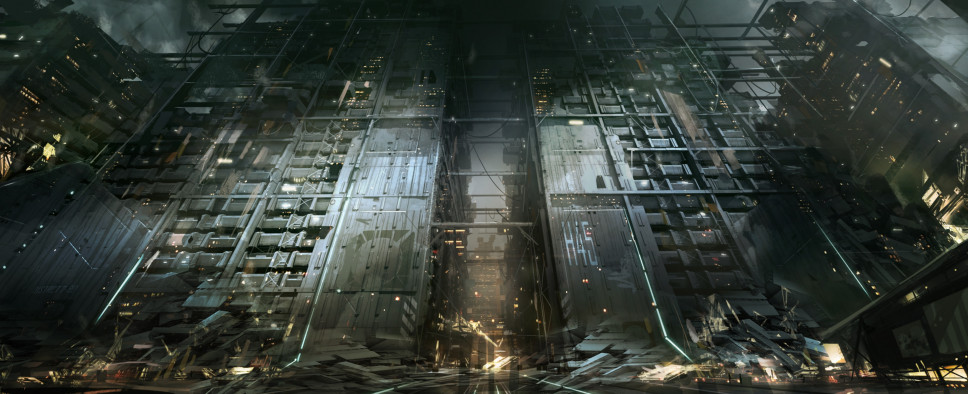On Cyberpunk and Architecture
-
Category: News ArchiveHits: 5476

The editors over at BitCultures have editorialized about the futuristic structures, landscapes, and general architecture that fascinate us and properly set the stage for a cyberpunk-themed video game, with a particular emphasis on how such elements were handled in Deus Ex: Human Revolution, System Shock 2, and other titles. An excerpt:
A better example of this design concept in Deus Ex: HR is the city of Hengsha in China. The city is physically divided into two halves: Lower Hengsha and Upper Hengsha. And yes, it is actually built that way, with one city on top of the other. Lower Hengsha is composed of our everyday architecture, with futuristic touches here and there. It is where the poor live, where you find the brothels, and where the cybergangs rule. It is made abundantly clear how hard life is in Lower Hengsha.
It is also implied that overpopulation drove the rich and powerful to build Upper Hengsha. A massive engineering marvel, Upper Hengsha shrouds Lower Hengsha in perpetual darkness because it covers the lower city from all sunlight. The people of Lower Hengsha only ever dream of reaching the Post-postmodern Upper Hengsha; it is viewed as a safe haven, where residents seem immune to the powers that be. You understand this just by seeing the sunlight glimmer on the polished metal panels covering every inch of Upper Hengsha, screaming (futuristic utopia.) Hengsha is by far one of my favorite cyberpunk cities. It tells its story with its form a story of how we have become divided by our advancements in society.
We have spoken about how high-tech architecture and low-tech architecture form a dichotomy that represents the current state of the game's setting. However, there is another way cyberpunk games do this by going fully futuristic but bringing the quality down. Two such games come to mind: System Shock 2 and SOMA. These games are set in the far future, so they naturally are composed of very highly advanced locales. That really tells us only one thing: it's the future.

